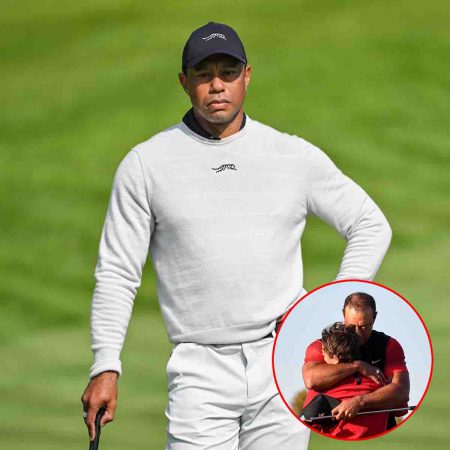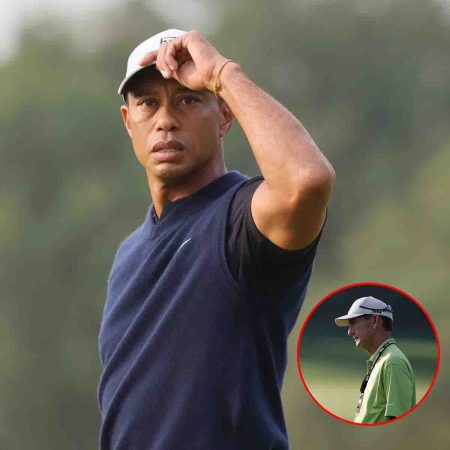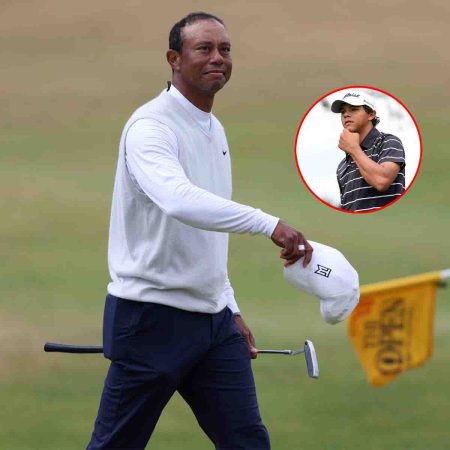For several years, Real Madrid experienced huge success with Casemiro, Luka Modric and Toni Kroos in midfield — the trio who came to be known as ‘CMK’ in the Spanish press.
That combination helped Madrid win three Champions League titles in a row from 2016-2018 and four in five years, as well as last year’s triumph. Throughout that time, Casemiro, Modric and Kroos were some of the first names on the team sheet for Real, giving them the balance they needed between defence and attack.
But the CMK era came to an end last summer when Casemiro left for Manchester United in a deal worth up to £70million ($86.2m) — a move that seemed surprising given how crucial the Brazil midfielder continued to be for Madrid. His departure coincided with the arrival of Aurelien Tchouameni from AS Monaco that summer and Eduardo Camavinga from Rennes the previous year, both of whom are considered to be the future of Madrid’s midfield.
The transition to a younger midfield has not been easy. The 37-year-old Modric and 33-year-old Kroos are still mainstays in the starting XI, while Tchouameni and Camavinga have struggled at times when called upon. Both Modric and Kroos’ contracts are up in the summer and there is uncertainty over their futures. They cannot play together forever, but are their replacements ready to step up in their absence?
Benzema, Modric, Kroos and the contracts that could shape Real Madrid’s future
The Athletic has turned to the stats to analyse Madrid’s changing midfield and how they are set for life after Casemiro, Modric and Kroos.
Madrid’s midfield has taken on a younger look in recent transfer windows. Federico Valverde joined from Uruguayan side Penarol in 2016 — although he has thrived on the right wing with Modric and Kroos still undisputed in central midfield.
The signing of Tchouameni last summer had immediate consequences. The youngster had come to take Casemiro’s place, and a perfect storm took the Brazilian to Old Trafford. Sources, who like others in this piece wished to remain anonymous to protect relationships, recognised that trying out a new challenge in the Premier League was something that had appealed to Casemiro for years — and he has gone from strength to strength since.
But, after years as the glue which stuck the CMK together, Casemiro’s imprint has been difficult to erase. “They understood each other with their eyes and he knew how to take up the positions of Kroos and Modric,” says one source from his camp.
 Toni Kroos, Casemiro and Luka Modric won multiple titles together at Real Madrid (Photo: Alex Gottschalk/DeFodi Images via Getty Images).
Toni Kroos, Casemiro and Luka Modric won multiple titles together at Real Madrid (Photo: Alex Gottschalk/DeFodi Images via Getty Images).
Casemiro’s influence at Madrid is clear when looking at the stats. According to Opta, the Brazilian averaged eight recoveries per game and made 230 recoveries in total last season in La Liga, the most of any Real outfield player. He constantly put opposition players under pressure and was fourth in the number of fouls won for Madrid over the course of the season (38).
But he also took a lot of pressure off Real’s defenders by playing close to the back-line at times, almost as a third centre-back — as those from his entourage also point out. That is clear in the following graphic showing Casemiro’s defensive territory plot for Madrid last season. The Brazilian defended across the pitch, but many of his interventions were concentrated inside the penalty area.

The following touch map for last season illustrates just how all-action Casemiro was for Real. The majority of his touches (10 per cent) were in the defensive midfield area, but he also covered plenty of space behind and in front of him, pulling out into wide areas within the defensive third when necessary.

Replacing Casemiro, then, was always going to be a difficult task. Tchouameni seemed to take it on with few major problems at the start of the season, starting Madrid’s first four La Liga games and even producing a deft assist for Vinicius Junior in a win against Espanyol that earned praise from legendary Los Blancos midfielder Guti.
But a combination of injuries and poor form means things have not gone to plan for the France international since the World Cup, as Real boss Carlo Ancelotti and Tchouameni himself have acknowledged.
Tchouameni has been keen to stress that he is “learning” when asked about his struggles. The 23-year-old is broadly occupying the same position as Casemiro did, although he does not venture into the deeper full-back positions as much as the Brazilian. He tends to play more through the centre of the pitch than Casemiro and is less aggressive in his defensive actions. He has only been shown one yellow card this season, compared to 11 for Casemiro last term.

Tchouameni cannot compete with Casemiro when it comes to recoveries — he averages 4.9 per game, three less than the Brazilian did last season. But the Frenchman’s interceptions are actually up on Casemiro’s (two per 90 minutes compared to 1.3 per 90 minutes) and he has made roughly the same number of tackles per game as his predecessor in the Madrid midfield (2.6 to Casemiro’s 2.8).
He also appears to have taken on the Casemiro role in terms of the defensive positions he takes up across the pitch — with a healthy smattering in more advanced areas within the attacking half, as shown by this graphic.

But Ancelotti has shown more faith in Camavinga this season. The percentage of minutes he has played for Madrid in La Liga has risen to 57.4 per cent this season, compared to 35.9 per cent last campaign. He has switched between left-back, defensive midfield and central midfield, but those closest to him believe his qualities are most suited to the latter role. That is an opinion shared by those at the club and something both Ancelotti and France manager Didier Deschamps are coming around to — even though Camavinga was named as a defender in his country’s list of call-ups for the most recent international break.
What makes Eduardo Camavinga the perfect super-sub for Real Madrid
So far, and particularly in the most important games, Camavinga has been chosen ahead of Tchouameni as a defensive midfielder. The 20-year-old stands out for being the Real player who has won the second-most fouls (48), behind only Vinicius Jr. He is an elusive midfielder who is tenacious in his pressing — he has made 87 recoveries to Tchouameni’s 69 so far this season, albeit having played five more times in La Liga.
“He is in a good moment, like Tchouameni in the first part of the season,” Ancelotti said in his latest press conference. “They have both replaced very well a legend and a player who has been the best of all for years in this position. They are the future.”
That two midfielders have been needed to do Casemiro’s work exemplifies how difficult it has been for Madrid to find a natural replacement for him.
They are likely to find it just as difficult to move on from Modric and Kroos. Both are actually playing a greater share of La Liga minutes for Real this season than they did last, with the Croatia midfielder appearing for 60.4 per cent of all minutes this season compared to 59.9 per cent the last, while Kroos has played 64.4 per cent of all minutes this campaign compared to 61.6 per cent last term.
 Dani Ceballos has seen more minutes this season following the departure of Casemiro (Photo: Gongora/NurPhoto via Getty Images).
Dani Ceballos has seen more minutes this season following the departure of Casemiro (Photo: Gongora/NurPhoto via Getty Images).
Who could replace that duo remains to be seen, but Dani Ceballos is one midfielder who has taken on a more important role this season. The 26-year-old has gone from being surplus to requirements at the Santiago Bernabeu last season to playing regularly for Ancelotti (appearing for 35 per cent of Real’s minutes in La Liga this season compared to 7.8 per cent last term).
Ceballos’ contract expires this summer, but he could help ease the transition to a new midfield. As the below graphic shows, Modric and Kroos tend to pass out to the left wing, where they regularly find Vinicius Jr. It is difficult to infer stylistic similarities between midfielders from the data — Ceballos tends to play on the left-hand side of midfield so would be more likely to pass to the left wing — but his pass graphic looks similar to the Croatian and the German’s.

That is without mentioning Valverde, who could be moved back to midfield once there is more of an opportunity to play there.
Other numbers suggest Madrid have not struggled to replace Casemiro as much as it might appear. At this stage of last season they had 60 points in La Liga and had scored 52 goals, conceding 20 times. This season they have 56 points and have scored 51 goals, conceding 21 times. The new era is already here.
source: theathletic.com







